PowerApps Administrator App
PowerApps Administrator App
In August 2018, we announced new Power Platform admin and maker connectors for PowerApps and Flow. These connectors provide access to the resources in the admin or maker scope.
This allows you to more easily gain both insight, and control over your Power Platform estate. Using these connectors makes it possible to build a solution that matches your exact enterprise governance, administration and maintenance requirements.
Recently, I built a PowerApp using these connectors that demonstrates how to manage environments, apps and app compliance. The aim of this app is to address a few common requirements that I ran into whilst working with various customers:
- (Governance) Easily identify apps where the app maker has not digitally signed a company PowerApps policy, and to be able to send a reminder to the app maker & their line manager.
- (Maintenance) Easily identify apps that have not been published within the past 60 days.
- (Administration) Identify apps by form factor.
The App
Lets take a look at the administrator app.

The screenshot above shows the app landing page. The pane on the left had side lists the environments in my tenant. When I click/ select an environment the page updates by returning a list of all apps within the environment and some basic information about the environment itself.
App details & administrative features
Each app in the environment is represented by an app tile. The tile contains information about the app, such as the title, app maker, governance compliance and form factor. Clicking on an app tile updates the user interface to provide more detailed information about the app:
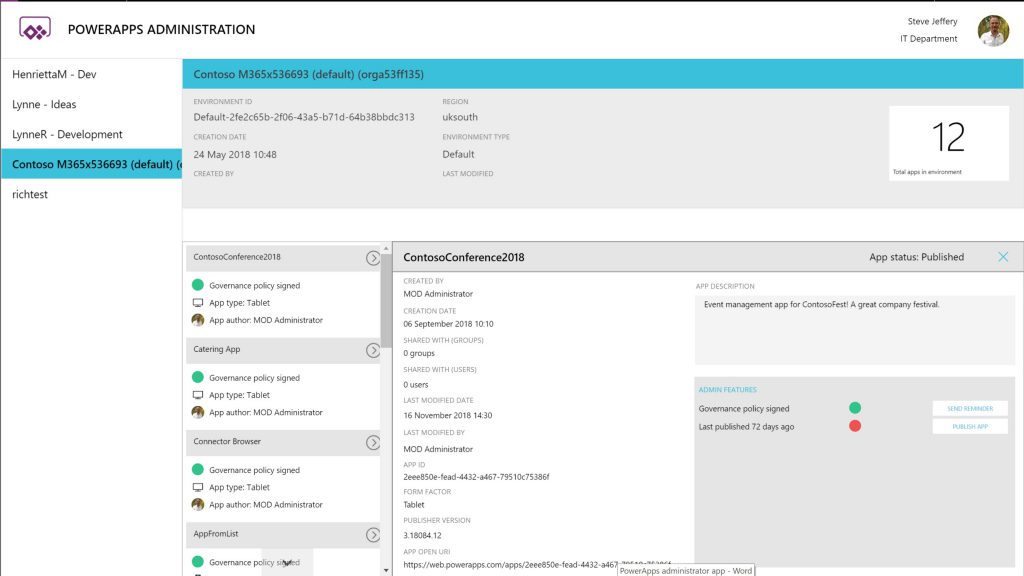
The screenshot above shows the app details. There is detailed information about the app and an area for administrative features (lower right). Each administrative feature or policy compliance has an indicator, quickly drawing your attention to any actions for this app. The screenshot shows a red indicator showing that the app was last published 72 days ago. This has been flagged as outside the enterprise policy, hence is highlighted with a red icon.
Next to each administrative feature is an action, in the example we can resolve the publishing issue by clicking the ‘Publish App’ button. This will re-publish the app.
Governance policy signing
The app indicates if the app author has agreed to a governance and usage policy. How does this work?
To achieve this, I utilized a number of O365 applications:
- SharePoint Site Collection
- Microsoft Forms
- Microsoft Flow
In my tenant I have a site collection for governance and usage of PowerApps. The policy page (screenshots below) is a modern page containing the policy text (dummy text in my example) and a Microsoft Forms web part.
Top of page:
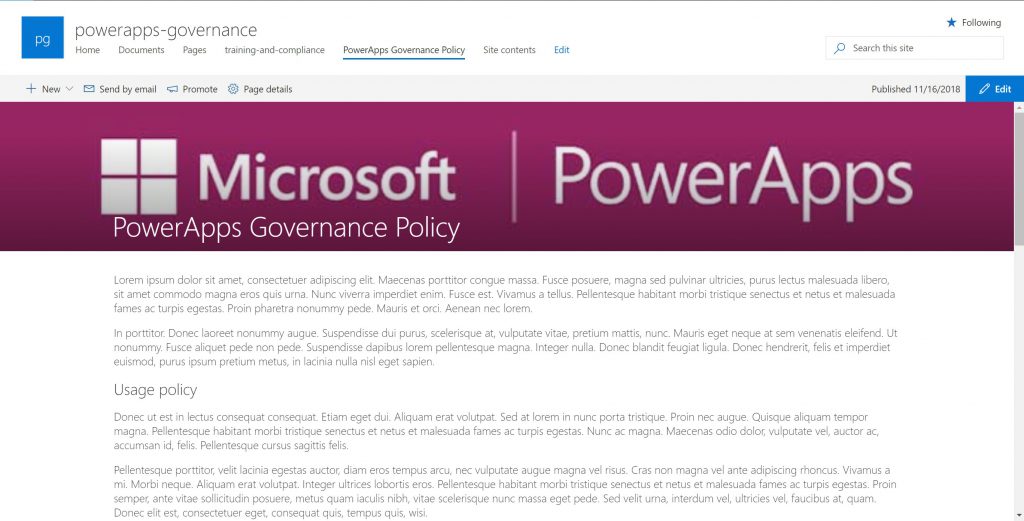
Bottom of page:
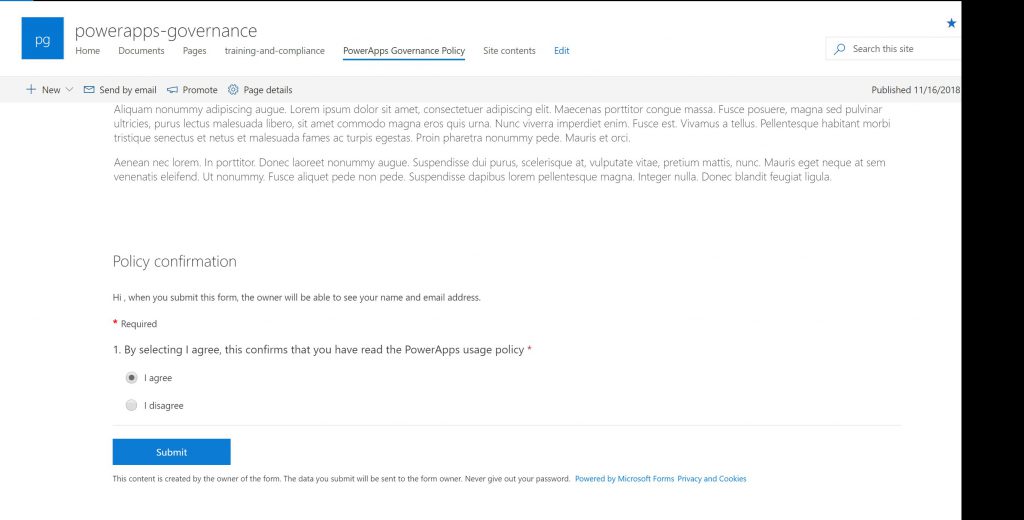
When a PowerApps app maker reads the policy, they select ‘I agree’ in the Microsoft Forms web part. Upon clicking ‘Submit’ a Microsoft Flow is triggered. The flow takes the output of the form submission and creates a SharePoint list item in a custom list containing the Email address of the user whom submitted the form:
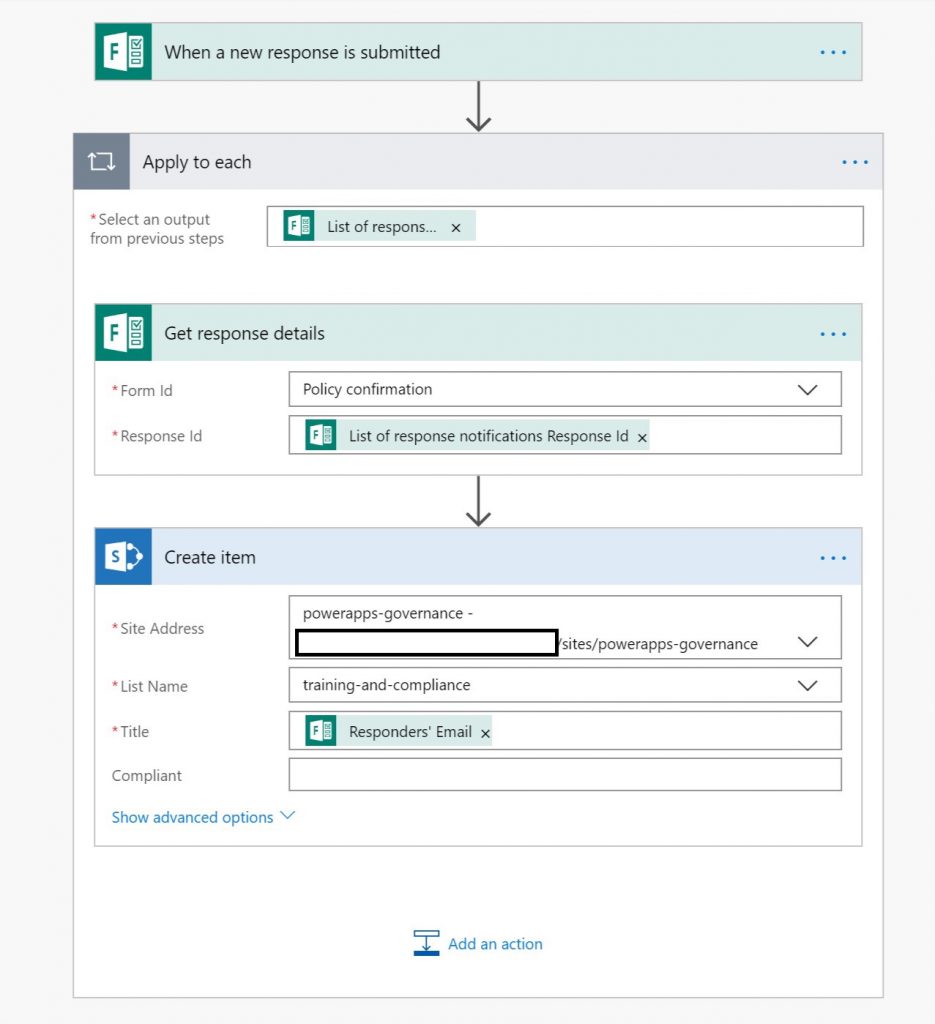
Back in the app…
For each app, we have an indicator that shows if the app maker has agreed to the PowerApps governance and usage policy. To achieve this functionality, I used the SharePoint connector to connect to the governance list containing list items for each app maker that agreed to the policy. In the UI, we have a shape (circle) that is used as an indicator. The Fill property of this shape takes the app maker Email address and compares it against the SharePoint list. If the app finds a match, the fill is green (indicating the app maker agreed to the policy). If there is no match, then the fill is set to red:
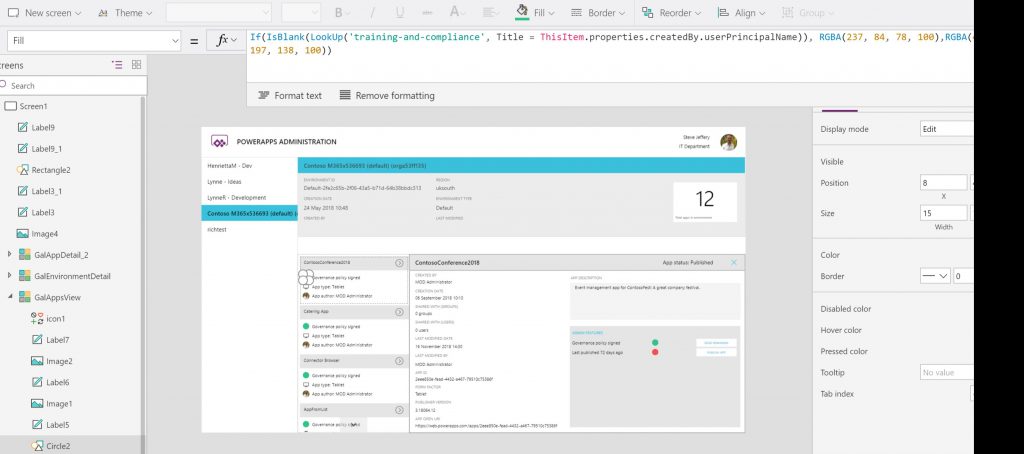
More functionality and a mobile version of this app will be coming in the future. If you are interested, a video demonstration is available on YouTube
https://youtu.be/aSNOPhzRcU4
Thank you for reading.
Steve
stjeffer-[MSFT]



